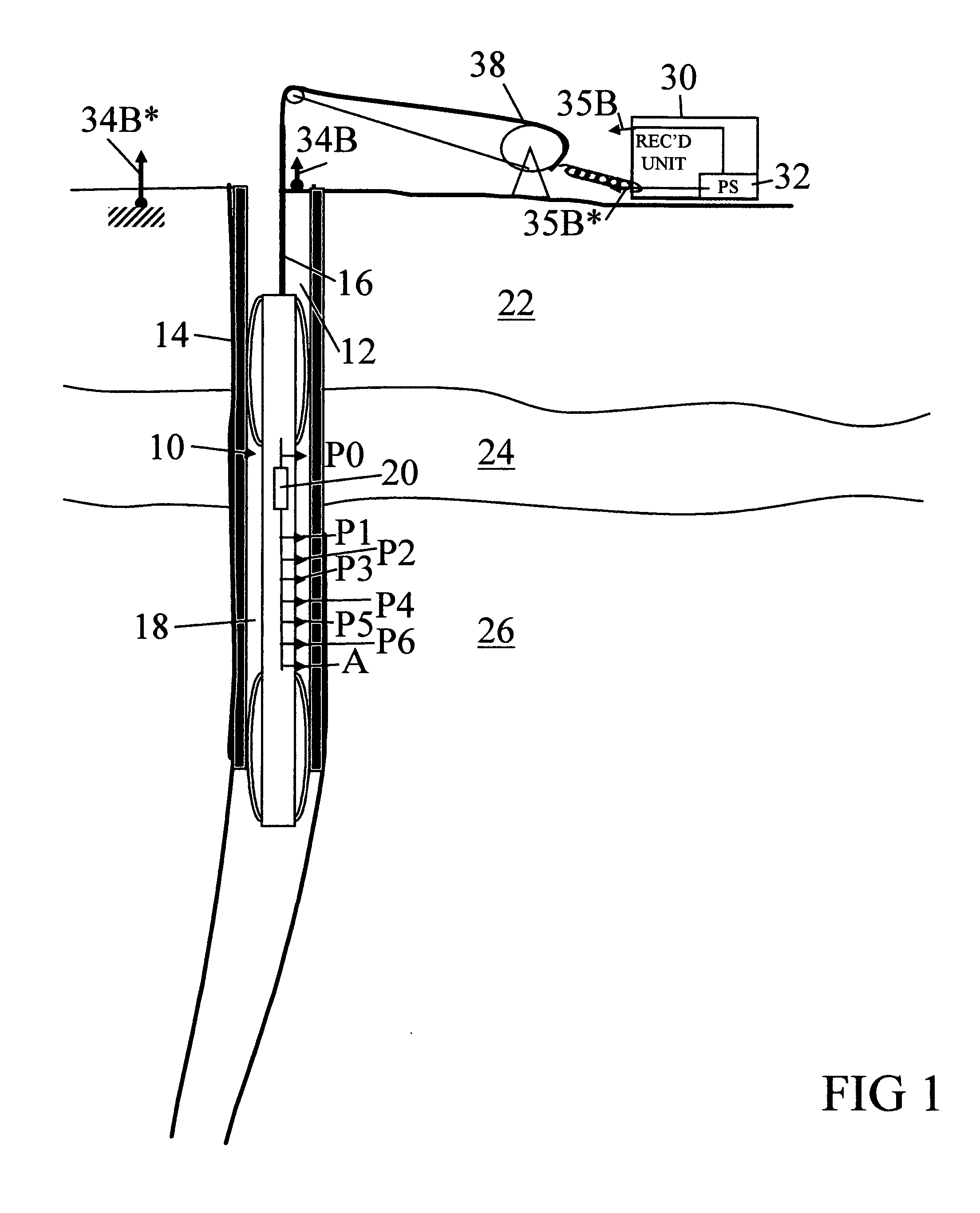Method and apparatus for measuring formation conductivities from within cased wellbores by combined measurement of casing current leakage and electromagnetic response
a technology of electromagnetic response and conductivity measurement, which is applied in the direction of measurement devices, instruments, scientific instruments, etc., can solve the problems of difficult to use conventional (so called “open hole”) techniques to determine the resistivity of various earth formations from within steel pipes or casings, and the measurement of formations of interest penetrated by a typical wellbore takes an extensive amount of time, so as to achieve slow movement of the measurement apparatus and measure the resistivity of the earth formations
- Summary
- Abstract
- Description
- Claims
- Application Information
AI Technical Summary
Benefits of technology
Problems solved by technology
Method used
Image
Examples
Embodiment Construction
[0033] One embodiment of a well logging instrument used to measure resistivity of Earth formations from within a wellbore 14, when the wellbore has a conductive pipe or casing within, is shown schematically in FIG. 1. The instrument 10 may include a sonde or similar mandrel-type housing 18. The housing 18 is preferably made from an electrically non-conductive material, or has such non-conductive material on its exterior surface. The housing 18 is adapted to be inserted into and withdrawn from the wellbore 14, by means of any well logging instrument conveyance known in the art. In the present example, the conveyance can be an armored electrical cable 16, extended and retracted by a winch 38.
[0034] Other conveyances known in the art may be used, including coiled tubing, drill pipe, production tubing, etc. Accordingly, the conveyance is not a limit to the scope of the invention.
[0035] The wellbore 14 is drilled through various Earth formations, shown schematically at 22, 24 and 26. T...
PUM
 Login to View More
Login to View More Abstract
Description
Claims
Application Information
 Login to View More
Login to View More - R&D
- Intellectual Property
- Life Sciences
- Materials
- Tech Scout
- Unparalleled Data Quality
- Higher Quality Content
- 60% Fewer Hallucinations
Browse by: Latest US Patents, China's latest patents, Technical Efficacy Thesaurus, Application Domain, Technology Topic, Popular Technical Reports.
© 2025 PatSnap. All rights reserved.Legal|Privacy policy|Modern Slavery Act Transparency Statement|Sitemap|About US| Contact US: help@patsnap.com



